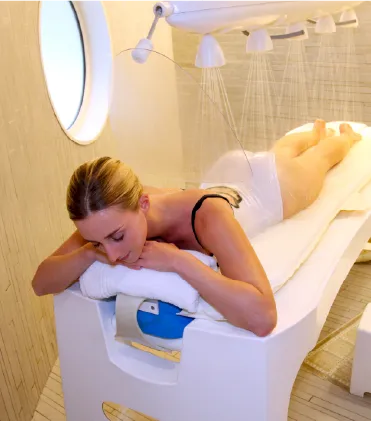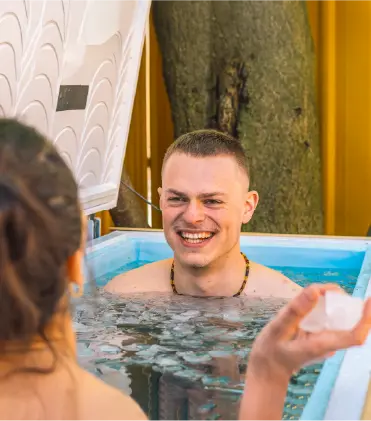What is the Treatment?
Watsu is a combination of shiatsu massage and water therapy. It involves both the characteristics of shiatsu massage like massage, joint mobilization, and stretching, but in a modified environment of water. Pool water is heated at a specific temperature which can help in the relaxation of muscles and promote ease in performing exercises. Watsu therapist performs all the exercises and stretching while the patient is floating in the water. The buoyancy of water reduces pressure on joints which allows movements at different joints with less pain.
Philosophy/Origin
Watsu is a term used for "Water Shiatsu". It was developed by Harold Dull in the early 1980s in Northern California. Dull was a Zen Shiatsu practitioner who realized that warm water increases the effects of Shiatsu. The principles of Watsu run in the same philosophy as the traditional Chinese medicine of energy flow (Chi) which focuses on releasing blockages, restoring balance, and promoting relaxation through mindful movements and touch.
Some of the health benefits of Watsu are mentioned below
Physical Benefits
Mental/Emotional Benefits
Long-Term Wellness
Ideal Audience
Watsu is ideal for individuals who prefer a more holistic approach to the treatment of illness rather than traditional medicine. People who look for a gentle yet powerful form of therapy can benefit from Watsu therapy. Some people also find it interesting to perform exercises in the water. It is suitable for all ages, from children to seniors.
Specific Conditions
Some specific conditions when Watsu therapy proves beneficial are as follows:
The treatment of Watsu therapy consists of the following steps
Initial Consultation
Before the session begins, the therapist will conduct a brief consultation to understand the detailed history of each individual and their specific needs and goals.
Entering the Water
The individual enters the warm water in the pool which is set at a specific temperature before starting the session. The individual is guided by the therapist to relax in a floating position. The warmth of water is soothing which helps in muscle relaxation.
Supportive Positioning
The therapist cradles and manipulates the head, neck, and back of each individual to perform various exercises. The individual also supports the Watsu treatment by following instructions.
Movement and Stretching
The therapist starts the movements in the water on the body of each individual in a rhythmic motion similar to passive yoga stretches. The force of water allows for extended and stress-free stretches.
Massage and Shiatsu Techniques
Throughout the session, the therapist applies pressure to various points in the body which helps in releasing tension and promoting energy flow.
Breathing and Relaxation
During session, the individuals are encouraged to synchronize their breathing to experience the more relaxation. The therapist may introduce gentle rocking motions to mimic the ebb and flow of water.
Completion
After about 60 minutes, the therapist gradually slows down the movements and allows the client to come back into awareness. The session ends with a period of rest in the water before exiting the pool.
What to Expect
In a Watsu session, a therapist gently manipulates and supports each individual in warm water which creates a feeling of safety and relaxation. The experience is deeply meditative and promotes the feeling of movements effortlessly. Clients often describe it as feeling like they are "floating in a womb," as the warmth and gentle motions trigger physical and emotional release. The breathing of each individual becomes synchronized with the flow of water enhancing a sense of calm.
Immediate Effects
Deep relaxation and release of muscle tension
Feeling lighter and more aware
Emotional release and a sense of calm
Reduces pain and discomfort, particularly in the back, neck, or joints
Long-Term Effects
Improved range of motion and flexibility in joints
Long-lasting pain relief in medical conditions
Reduced levels of anxiety
Management of stress
Promotes mind-body balance
Before the Treatment
Drink plenty of water to stay hydrated before the session
Wear a comfortable swimsuit
Discuss and take counseling of any health concerns or injuries to the therapist
Aftercare
Rest and allow the body to participate in the Watsu therapy
Stay hydrated and avoid heavy activity for the rest of the day
Understand and feel any emotions that may be sensed during the session
Wellencia, a platform in India, offers personalized treatment plans for Ayurvedic therapies, including Watsu, for people around the world. India's healthcare system focuses on promoting overall health and wellness by providing high-quality holistic treatments.







